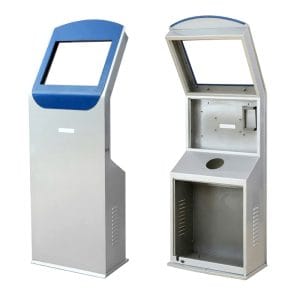What are Sheet Metal Components?
Sheet metal components are a critical part of any manufacturing process. From automobiles to medical equipment, these parts make up the foundation of many systems. In this blog post, we will explore what sheet metal components are and what they do in the manufacturing process. We will also provide tips on how to select the right component for your application and how to ensure that it meets your specific needs.
What are Sheet Metal Components?
Sheet metal parts are components used in aircraft and other manufacturing industries. They can be made from a variety of metals, including aluminum, copper, brass, and stainless steel. Sheet metal is cut into shapes using a variety of cutting tools and then formed into parts using a combination of welding and brazing techniques.
Types of Sheet Metal Components
There are many different types of sheet metal components and each has its own unique characteristics and uses.
Sheet metal components can be fabricated from a number of different materials, including metals like aluminum, steel, and brass, as well as plastics like polycarbonate.
Some common types of sheet metal components include:
-Sheet metal screws: These are screws made out of sheet metal and are often used to secure pieces of the structure together.
-Sheet metal washers: Sheets of metal that are used to create a seal between two other pieces of Sheet Metal.
-Sheet Metal Hinges: These are hinges that use a combination of a pivot point and a hinge arm to allow the hinge to move in two directions.
Uses for Sheet Metal Components
Sheet metal components are commonly used in a variety of different applications, from automobiles to aircraft. Here are some of the most common uses for sheet metal components:
Auto Parts: Sheets of metal are used to make parts for cars and other vehicles. They can be cut into any shape or size, and are often decorated with paint or other materials.
Aircraft Parts: Sheets of metal are also used to make parts for airplanes. They can be twisted or bent into any shape, and often have to withstand high temperatures and harsh conditions.
Household Appliances: Sheet metal is also used to create parts for household appliances, such as washers and dryers. This is because sheet metal is strong enough to stand up to repeated use but still flexible enough to move around easily.
Advantages and Disadvantages of Sheet Metal Components
There are many advantages and disadvantages to using sheet metal components in construction. The following are just a few:
Advantages of Sheet Metal Components
-Sheet metal components can be easily customized to fit specific needs.
-Sheet metal components are strong and durable.
-Sheet metal components can be produced quickly and cheaply.
-Sheet metal components can be easily repaired or replaced if they fail.
Disadvantages of Sheet Metal Components
-Sheet metal components can be difficult to bolt or fasten together securely.
-Sheet metal components may require special tools or welding equipment to install or repair.
Conclusion
Sheet metal components are essential for many industries, from transportation to construction. They can be made from a variety of materials, including steel and aluminum, and come in a variety of shapes and sizes. By understanding the different types of sheet metal components available, you can better choose which ones will fit your needs and help you get the job done efficiently.


